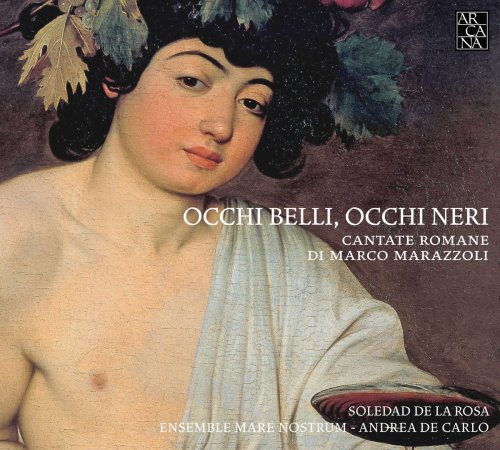Soledad de la Rosa, Ensemble Mare Nostrum - Marazzoli: Occhi belli, occhi neri (Cantate romane) (2013) [Hi-Res]

Artist: Soledad de la Rosa, Ensemble Mare Nostrum, Andrea De Carlo
Title: Marazzoli: Occhi belli, occhi neri (Cantate romane)
Year Of Release: 2013
Label: Arcana
Genre: Classical
Quality: flac lossless / flac 24bits - 96.0kHz +booklet
Total Time: 00:55:22
Total Size: 235 / 890 mb
WebSite: Album Preview
TracklistTitle: Marazzoli: Occhi belli, occhi neri (Cantate romane)
Year Of Release: 2013
Label: Arcana
Genre: Classical
Quality: flac lossless / flac 24bits - 96.0kHz +booklet
Total Time: 00:55:22
Total Size: 235 / 890 mb
WebSite: Album Preview
---------
01. Salutate il nuovo aprile
02. Occhi belli, occhi neri
03. Canzone No. 10
04. Dialogo frà Rosinda ed Olindo
05. Sinfonia
06. Speranze, e che farete
07. Canzone No. 14
08. Piangete amanti
09. Mi fate pur ridere
10. Sinfonia e balli
11. Sopra la rosa
12. E sarà che la mia fede
One of the most productive and versatile of Italian composers, Marco Marazzoli is remembered today principally for his part in the development of Roman opera. Or maybe not even that, seeing that his output is represented in current record catalogues by only a few scattered entries, amongst which the recording of La Fiera di Farfa by Vincent Dumestre (Alpha 172) is the most significant. And yet Marazzoli, who lived in the shadow of three great popes, is one of the most significant Roman composers of the mid-seventeenth century.
Besides which, his compositional skill, the originality of his style and the freshness of his melodies put him on a par with the greatest names of the Baroque era.
For his debut album on the Arcana label – after three successful recordings issued on Ricercar and Alpha – Andrea De Carlo and his Ensemble Mare Nostrum explore one of the most noteworthy areas of his output: the secular cantata.
The scale of his production (379 items!) places Marazzoli among the big names in the history of the genre. The characteristics that distinguish these works are the stunning originality of the melodic lines that anticipate the great arias that will appear years later, and a great variety of form, style and subject. A good singer himself, he probed the vocal skills of the performers, which is why his music requires a sophisticated vocal technique for works where legato, coloratura, and extreme textures combine to delight the listener.


![Lea Maria Fries - CLEO (Deluxe Edition) (2025) [Hi-Res] Lea Maria Fries - CLEO (Deluxe Edition) (2025) [Hi-Res]](https://www.dibpic.com/uploads/posts/2025-12/1765466583_cover.jpg)


![Eyal Talmudi - Sonolodge III (2025) [Hi-Res] Eyal Talmudi - Sonolodge III (2025) [Hi-Res]](https://www.dibpic.com/uploads/posts/2025-12/1765452900_lx0qd5oe5d27jughu8ket317s.jpg)


